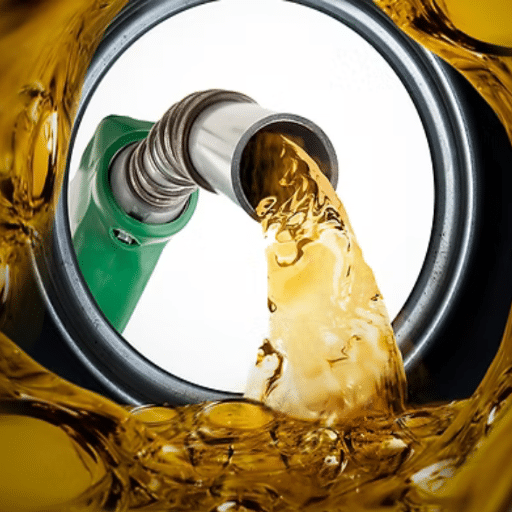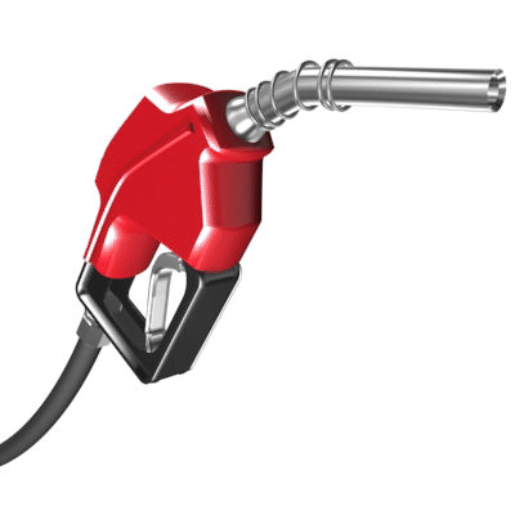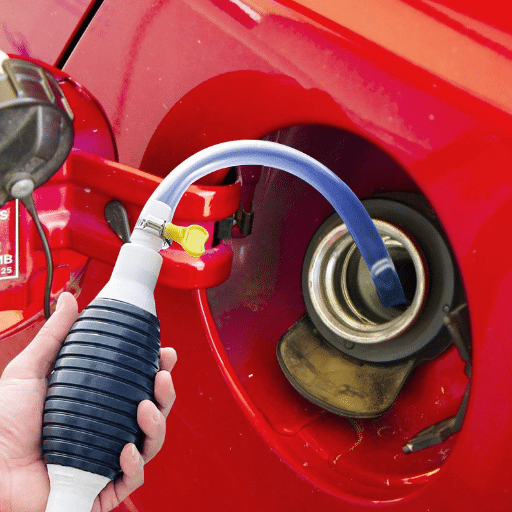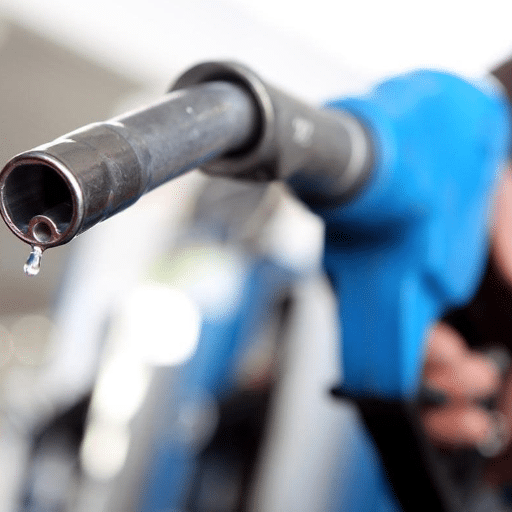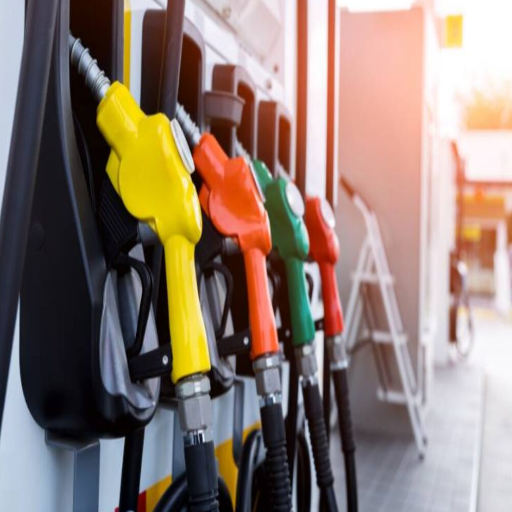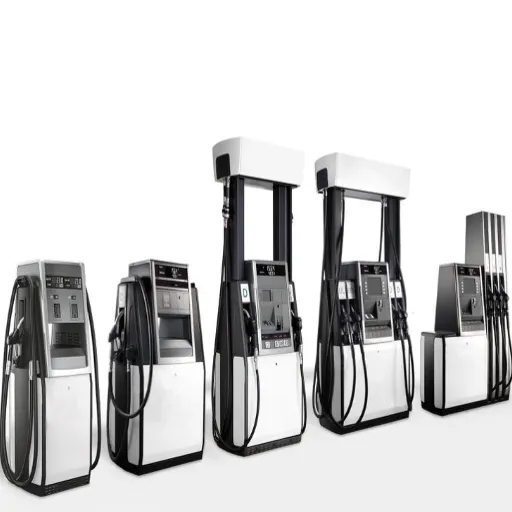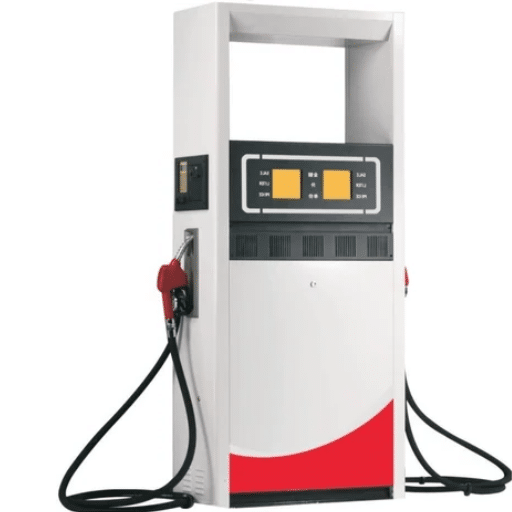When you’re actually working under some classified hazardous situations assumed due to the presence of flammable gases, vapors, or combustible dust, safety should strictly remain an option. Selecting the correct lighting solutions to gain operational efficiency while complying with strict safety regulations becomes imperative. An innovative solution offered by explosion-proof LED lights is prepared to make sure that there is no risk of ignition in volatile areas. This guide talks about the crucial features of explosion-proof LED lighting and how they eliminate hazards, with other factors to consider for actualizing them in the field. Be it the oil and gas industry or chemical manufacturing and any other such high-risk endeavor, this article shall arm you with your safety and performance concerns on advanced lighting technologies.
Introduction to Explosion-Proof Lighting
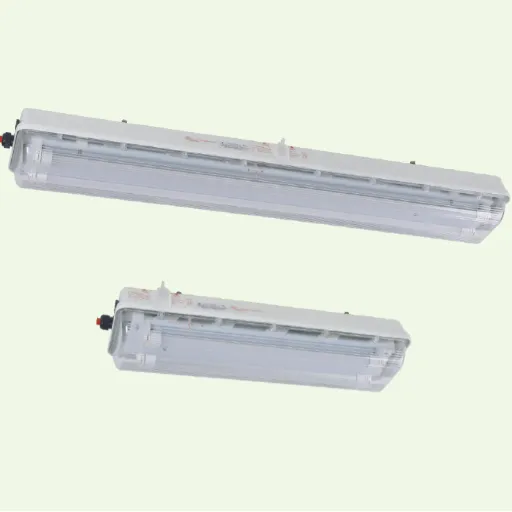
The explosion-proof lighting is designed to operate safely in environments in which flammable gases, vapors, or combustible dust are present. These lights are built so that any spark or heat inside the fixture cannot escape and ignite the external atmosphere. Explosion-proof lights are utilized in very hazardous industries like oil and gas, chemical processing, and mining to ensure the safety of the workplace by satisfying applicable standards, such as the National Electrical Code (NEC). The fixtures are extremely rugged and tested to withstand the harsh environmental conditions and, thus, are an effective tool in risk reduction for hazardous locations.
What is Explosion-Proof Lighting?
Described are lighting systems specialized for really containing sparks, flame, or heat that may ignite explosive gases, vapors, or dust in a hazardous environment. These lights come with reinforced enclosures that do not burst or introduce flames into the environment and also have sealed components that serve as a safety feature. Various codes-classes/degrees are grouped and given ratings to explosion-proof lights, depending on the kind of hazardous substances present in the work areas, such as NEC or IEC. These fixtures guarantee safety and various compliances within the industries where flammable substances are frequently handled: oil and gas, chemical manufacturing, and mining.
Importance of Safety in Hazardous Locations
Safety at hazardous locations is the utmost consideration to protect life, equipment, and the environment against disastrous events. It, in general, marks those sites where flammable gases, vapors, dust, or fibers could be present that could act as an ignition if a spark is produced or temperature rises, or an electrical equipment failure occurs. Correct classification of the hazardous zones according to the kind, frequency, and duration of the presence of hazardous substances helps in deciding the suitable safeguards.
An important safety measure is to provide explosion-proof or intrinsically safe equipment, which will eliminate any ignition sources. Periodic maintenance and inspection for conformity to stipulated rules, such as NEC, IEC, and ATEX standards, help in maintaining a constant state of compliance and operational safety. Safety attention will tend to keep away from risks of explosion, safeguard human lives, and diminish accident costs, both monetary and reputation-wise.
Overview of LED Explosion-Proof Lights
LED explosion-proof lights are special fixtures that operate safely in areas filled with flammable gases, vapors, or dust. These lights avoid anything that may potentially ignite the surrounding materials, thus conforming to safety norms such as NEC, IECEx, and ATEX standards.
A major advantage of LED explosion-proof lighting is its energy efficiency; it has a higher lumen-to-watt ratio compared to conventional lighting technologies. Consequently, energy expenses are reduced due to less power consumption. They give off very little heat, thereby increasing the safety of the operations. Another advantage is that an LED has a longer lifespan of more than 50,000 hours, thereby reducing maintenance and downtime costs in hazardous environments.
The sturdy construction incorporates tempered glass, aluminum corrosion-resistant, and gasket-sealed housings in crafting these lights, making sure they stand the test of extreme conditions. Typical applications for these lights include oil and gas, chemical processing, mining, and manufacturing industries. In line with design advancements, these improved thermal management systems integrate smart control systems, which present the possibility of optimizing the light’s performance and operational reliability within hazardous zones.
Types of Explosion-Proof LED Lights
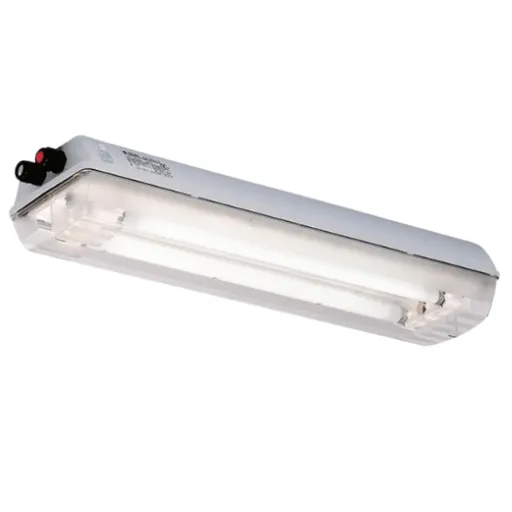
Explosion-Proof Fixed Lights
These lights in the permanent installation set-up are designed to provide consistent and reliable illumination in a given area, restaurants-industrial plant, or factory.
Explosion-Proof LED Portable Lights
Easy to carry, these lights are meant to be set up in temporary applications or maintenance work in hazardous environments where flexibility is required.
Explosion-Proof LED Floodlights
These are in-the-wild, meant for extremely dangerous industrial spaces or outdoors.
Explosion-Proof Emergency LED Lights
Give indefinite backup lighting to allow for safe evacuation during power failure in hazardous areas.
Explosion-Proof LED Linear Lighting
They are put there in somewhat closed tenders aligned to corridors to provide consistent and uniform light to key operation sections.
Understanding Different Light Fixtures
A wide array of lighting fixtures meets all industrial & commercial requirements today. For instance, LED floodlights have witnessed rapid innovation with new models ranging in lumen output from 10,000 to above 100,000 lumens. Also, these lights are constructed with durability in mind and have ratings of IP65 or above as assurance against dust and water ingress. The very definition of outdoor lighting.
On the other hand, explosion-proof emergency LED lights are packed with new advanced battery technology. Such fixtures with lithium-ion batteries offer up to 90 minutes of illumination during power failures, and hence they can be considered very reliable. Another great point about these emergency lights is their ability to operate well under extreme temperature conditions of about -20°C to 55°C, making them fit for various industrial applications.
Similarly, the linear LED lights have been growing in popularity as they are energy-efficient and long-lasting. With a rating of over 50,000 hours of life, these lights provide the most cost-effective solution when it comes to lighting corridors, warehouses, or small areas. New features, of course, add dimmable options and smart controls for enhanced flexibility and energy conservation by varying brightness with usage and occupancy.
Knowing the technical specifications and capabilities of these fixtures helps in choosing the correct lighting for given operational requirements to enhance safety, operational efficiency, and sustainability in the industrial ambience.
Classification of Hazardous Areas
Hazardous areas are classified considering the presence and duration of potentially explosive atmospheres caused by flammable gases, vapors, dust, or combustible fibers. These classifications warrant that suitable safety measures may be appropriately taken to mitigate the existing risk. The two principal systems used for classification are the International Electrotechnical Commission (IEC) system and the National Electrical Code (NEC) system.
IEC Classification System
This system designates hazardous zones as:
| Zone | Description | Risk Level |
|---|---|---|
| Zone 0 | An area where an explosive atmosphere is present continuously or for long periods | Highest Risk |
| Zone 1 | An area where an explosive atmosphere is likely to occur during normal operations | High Risk |
| Zone 2 | An area where an explosive atmosphere is unlikely to occur but may occur for short durations under abnormal circumstances | Moderate Risk |
NEC Classification System
This Uses Classes, Divisions, and Groups:
- Class I: Areas with flammable gases or vapors
- Class II: Areas with combustible dust
- Class III: Areas with ignitable fibers or flying
Considering that Class I encompasses flammable materials, a distinction between Division 1 and Division 2 exists. Division 1 covers situations wherein explosive atmospheres are common under normal operations; Division 2 extends to situations wherein such atmospheres are abnormal or unusual.
Groups – Specific substances are further divided into Groups (e.g., Groups A-D for gases within Class I and E-G for dust within Class II), so that safety measures can be tailor-made.
The very stringent guidelines that are made according to these classifications band the design, installation, and maintenance of equipment so as not to become a source of ignition, all towards ensuring operational safety in hazardous locations and compliance therewith.
LED vs. Traditional Explosion-Proof Lighting
When evaluating LED versus traditional explosion-proof lights, many key points arise: efficiency, durability, safety, and the operations involved in cleaning and maintaining.
LED Explosion-Proof Lights
- Superior energy efficiency
- 50,000+ hour lifespan
- Lower heat generation
- Reduced maintenance costs
- Mercury-free and recyclable
- Better illumination quality
- Dimming capabilities
Traditional Explosion-Proof Lights
- Lower initial cost
- Shorter lifespan
- Higher heat output
- Frequent replacement needed
- May contain mercury
- Limited control options
- Higher maintenance effort
Energy Efficiency
The best evidence in favor of LED explosion-proof lights is top energy efficiency as compared with conventional lighting alternatives, such as incandescent and fluorescent. An LED consumes less wattage and, yet, gives an equal or better amount of lumens, thereby reducing electricity bills and causing less environmental pollution.
Durability and Longevity
LEDs give a longer life compared with traditional lighting alternatives. While traditional types need frequent replacement, LEDs might work for 50,000 hours or more. Such long life means lesser maintenance and downtime of equipment, a salient factor to consider in hazardous locations.
Safety Advantage: One of the less acknowledged perks of LEDs is that they generate relatively less heat as compared to incandescent or HID. Lower heat outputs mean ignition risks are greatly reduced in explosive atmospheres, thereby affording inherent safety to LEDs in such locations.
Maintenance and Operational Costs
Traditional explosion-proof lighting systems require frequent bulb replacements and higher maintenance effort because they have shorter lifespans and are susceptible to wear and tear. Conversely, LEDs tend to operate reliably over longer time frames, greatly reducing the maintenance costs and regular interventions.
Illumination Quality and Functionality
LEDs offer a higher illumination performance, including brightness levels, uniformity of incident light, and dimming functions. All these capabilities render them highly useful for many industrial applications, especially where precision and clarity are of importance.
Environmental Impact
An LED eliminates any traces of mercury found in traditional lighting, fairly or simply to recycle. The presence of LEDs, therefore, makes the green option rather heavily weighted towards sustainable operations.
Explosion-proof traditional lighting techniques were once widely used, but advancements in technology and advantages in using LED lighting make installing it now in hazardous locations a preferable choice. LEDs, because of their better energy efficiency and safety aspects, and cost advantages, are, therefore, a disruption in the explosion-proof lighting field.
Applications of Explosion-Proof LED Lights
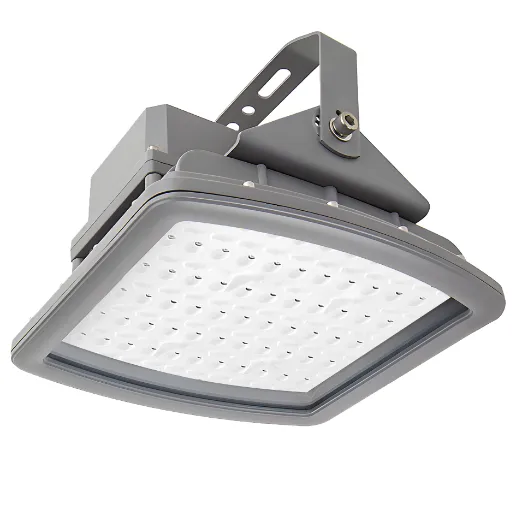
Explosion-proof LED lights are installed-largest safety component in a site where an explosion could be generated from the presence of flammable gases, vapors, or dust. Typical uses are as follows:
Oil and Gas Facilities
For offshore platforms, refineries, and pipelines where safety considerations are paramount.
Chemical Plants
Appropriate lighting given the volatility of its chemical processes.
Mining Operations
Illuminating working conditions in potentially explosive underground situations.
Manufacturing Facilities
In industries handling flammable materials or powders.
Storage and Warehousing
Such as storing hazardous substances like fuels or chemicals.
Such lights provide a safe working environment and assure operational function under the rigorous requirements of hazardous locations.
Common Uses in Hazardous Locations
Hazardous location lighting is necessary in surroundings wherein potentially explosive gases, vapors, dust, or fibers may be present. The lights most often find application in:
- Oil and Gas Industry: Lighting ensures safety during exploration, drilling, and refining, with flammable gases or liquids existing in the environment.
- Chemical Plants: For illumination of environments where volatile chemicals exist to minimize the risk of ignition or explosion.
- Food Processing Facilities: To safeguard areas prone to combustible dust accumulation, such as grain silos or sugar processing plants.
- Waste Treatment Plants: To improve visibility in operations where methane or other explosive gases may accumulate.
- Pharmaceutical Manufacturing: Lighting is required in controlled environments where precise production needs both safety and security.
These lights contribute to safety enforcement in hazardous industries; they are also required under stringent regulatory measures and to promote the efficiency of operational activities.
Lighting Design for Hazardous Areas
The proper lighting design for hazardous areas plays a role in safety, visibility, and conformity with industry standards. The identification of specific hazardous zones (Zone 0, 1, 2 for gases or Zone 20, 21, 22 for dusts) is the first step in the process, per the regulatory framework such as ATEX or NEC. Lighting fixtures must be certified explosion-proof or intrinsically safe devices, depending on how much risk is involved and whether any flammable substances are present.
A few points to consider include: selection of materials like corrosion resistance and heat dissipation for the housings, sealing the lights from gas or dust ingress, etc. LEDs tend to be favored more and more for their energy efficiency, long life, and negligible heat output. This feature contributes to lessening the ignition risk. Also, proper beam direction and intensity must be ensured to guarantee the right visibility while avoiding glare in confined or dusty atmospheres.
Maintenance procedures should be considered at the design stage, aiming at easy-to-access fixtures that minimize downtime and hazard exposure during servicing. In doing so, a well-conceived lighting system provides safety and operational effectiveness in hazardous environments.
Case Studies of LED Explosion-Proof Lighting in Action
Since then, LED explosion-proof lights have been set up in various sectors that needed enhanced safety and efficiency measures. The following are three primary case studies:
Oil and Gas Processing Plants
An offshore oil platform installed LED explosion-proof fixtures to replace traditional lighting in hazardous zones. As a result, the platform experienced a nearly 60% reduction in energy consumption, which somewhat translated to workers being able to enjoy better lighting quality. Alongside reducing maintenance costs due to longer life, LED fixtures disrupted operational scenarios far less than traditional lighting would have in an environment highly prone to flammable gases and vapors.
Chemical Manufacturing Facilities
An aging plant with its outdated lighting installations had high maintenance costs while incurring additional dangers of sparks. After embarking on the LED explosion-proof lighting system, the plant reported an improvement in safety in operations and maintenance costs, going down by 50%. The robust LEDs could resist corrosive airborne chemicals, giving safe assurance to uninterrupted company operations.
Mining Operations
The mining company’s operations in confined and dusty spaces had their challenges, ranging from poor visibility to highly combustible dust explosions. Chiefly deploying LED explosion-proof lamps, a marked improvement in illumination was noted, alongside rigorous adherence to safety standards. Their durability ensured proper engineering to remove the risks of overheating or sparking, safeguarding the workers and equipment in this rare environment.
Since these case studies highlight the major advantages of LED explosion-proof lighting, we highlight the critical safety aspect, lower operation costs, and the age-old concern of efficiency being optimized in various high-risk industries.
Choosing the Right Explosion-Proof LED Lighting Fixture
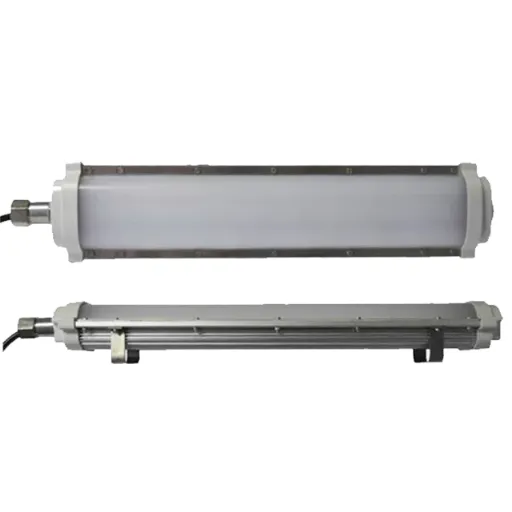
Selecting the right explosion-proof LED lighting for your factory or plant entails considering the following aspects:
Key Selection Factors
Certification and Compliance
The equipment has to conform to industry standards and be certified for a particular hazardous environment (for example, ATEX, UL, or IECEx certifications).
Area Classification Compatible
Identify the particular zone or division of usage (for example, Zone 1, Zone 2) for which the fixture has been approved.
Durability and Materials
Fixtures have to be of the highest quality and must be corrosion-resistant whenever industrial harsh conditions are prevalent outside.
Light Output and Efficiency
Choose a fixture that offers sufficient light output while maintaining energy efficiency.
Maintenance and Repair
Both these considerations favor a fixture design that resists aging and requires less maintenance, thereby contributing to less downtime for repairs and maintenance activities.
Careful assessment of the above factors will provide safe, reliable performance over a long period in harsh conditions.
Factors to Consider
Here are some brief insights taken from distinguished sources regarding the considerations for selecting hazardous area lighting:
Robustness and Durability
Fixtures should be manufactured from the best materials, usually stainless steel, aluminum, or any other corrosion-resistant material, to withstand harsher conditions. Look for IP and other relevant certifications for protection against dust, water, and any other external elements.
Light Output and Efficiency
Energy-efficient LED fixtures must be used in hazardous areas since they offer a longer lifespan, lower power consumption, and stable light quality. Lumens per watt must be analyzed, and the fixture should meet the required illumination levels for the application in question.
Ease of Maintenance
Choose fixtures with designs that allow easy inspection and shorten downtime. These features may include modular components and tool-less access to enrich operational effectiveness while maintaining safety during repair or replacement.
If you focus on these priorities, balancing safety, reliability, and cost-effectiveness in arduous environments will be in your grasp. Compliance with an international standard such as IECEx or ATEX must always be the top priority for hazardous area installation.
Understanding the Lighting System Requirements
When choosing lighting systems, special installation environments, working requirements, and regulatory demands have to be considered. Begin with an assessment of the required illumination level needed for the visibility and safety of workers, which depends on the size of the area, the nature of the work, and whether any hazardous conditions exist.
Then give further consideration to the durability and reliability of the lighting system. In a harsh environment that may involve extreme temperatures, vibrations, moisture, or dust, the lighting system must be specially designed to withstand the environmental stresses involved. LED has become popular because it consumes less energy, has a long life, and requires very little maintenance.
Also, ensure that the lighting system meets safety standards and regulations. It is important to guarantee IECEx or ATEX certification for lights intended for hazardous areas so that they are tested for the highest levels of safety and performance. Correctly certified systems mitigate accident risk, improve operational efficiency, and enhance safety.
Considering these requirements carefully should provide you with a lighting system that can deliver and yet be compliant in the toughest environments.
Top Features of High-Quality Explosion-Proof LED Lights
Durability and Robust Construction
Any proof LED light gets manufactured to withstand the harsh environmental conditions, such as extreme temperatures, moisture, and dust. Their robust housings are often corrosion-resistant, which makes them durable enough to endure operations in severe industrial setups.
Explosion-Proof Certification
Their design, manufacture, signing, and certification aim to prevent ignition in hazardous areas containing explosive gases or flammable dust. They meet recognized standards like ATEX, IECEx, and UL, which stand at the pinnacle of safety assurance.
Energy Saving
These lights consume very low energy as compared to conventional lights, so they save cost and save the environment. They work with higher luminous efficacy that can provide bright yet focused illumination with less power.
Very Long Life
At an indignant sizzler, a proof LED light has a relatively long life span, anywhere above 50,000. This remains as far as maintenance from sudden drops, thus very suitable for continuous operation environments.
Versatile Applications
Thanks to quality-proof LED lights, a wide variety of applications exist, including oil and gas facilities, chemical plants, etc., in different hazard-rated locations. These lights ensure reliable lighting in indoor and outdoor settings.
By further empowering these features, proof LED lights enforce safety, efficiency, and reliability, further ranking them as a premium choice of lighting solutions for industrial and hazardous areas.
Benefits of Using LED Explosion-Proof Lighting
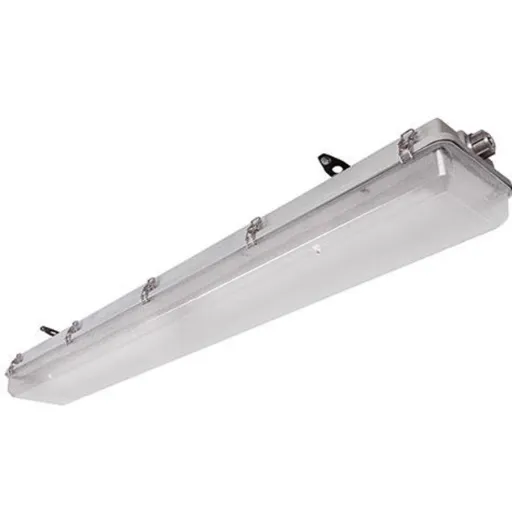
-
Safety Enhancement
LED explosion-proof lights are explicitly designed to operate safely in hazardous surroundings, thus mitigating the threat of sparks or explosions.
-
Energy Efficiency
They tend to use less energy than conventional lighting systems, thus giving rise to substantial savings on your utility bills over time.
-
Durable and Long-Lasting
Made with strong materials, it can last for a long time, and it can stand in extreme conditions so as to lessen maintenance and replacement costs.
-
Best Lighting
LED may provide consistent, bright illumination with wonderful quality, along with better viewing conditions and work performance.
-
Eco-Friendly
LEDs are eco-friendly as they do not contain any harmful chemicals, lose less heat compared to other lighting options, and thus help in environmental conservation.
By exploiting the benefits mentioned above, LED explosion-proof lighting systems ensure increased safety and functionality during operations in industrial and hazardous sites.
Energy Efficiency and Longevity
Considered one of the most energy-efficient lighting systems with excellent life expectancy, LED explosion-proof lights stand out. These lighting units use up to 75 percent less energy when compared with traditional lighting systems, presenting great opportunities for energy savings over time. With lighting energy being distinct from heat energy, LEDs practically convert almost all electricity into light, thereby saving huge amounts of electric energy. LED lights can last for 50,000 hours or more, minimizing replacement and hence, maintenance costs. Their rugged construction also offers great resistance to hostile environments, making them suitable for industrial and hazardous applications where utmost reliability is critical. Thus, by using LEDs, energy costs are pared down, and so is the impact on the environment, thereby realizing sustainability goals.
Enhanced Safety and Compliance
With LEDs, safety and compliance inside our facility can be greatly enhanced. The instant-on feature ensures that the lights are not delayed in coming to full illumination, thus reducing the risks in critical areas. They contain no hazardous substances, such as mercury, and do not generate heat, thereby adhering to safety regulations and making a better working environment. Their consistency and reliability ensure that we meet compliance standards that have a twofold effect on operational safety and the ability to litigate that we adhere to regulations.
Cost-Effectiveness Over Time
LED lights do heavily affect the life-cycle energy-cost savings down the path of conserving energy. LED lights use less electricity, thus cutting down on electricity bills by 50-75%, compared with incandescent or fluorescent ones. Also, since LEDs last for about 25,000 hours, you would be purchasing fewer lamps in shorter periods and saving change due to their price difference in comparison. Being durable and rugged, the LEDs also lower the maintenance costs. Incurring more first-installation costs than traditional systems, LEDs recover the complete investment in a short span-decreasing energy cost and reducing other maintenance expenditures, qualifying for being termed as the more cost-effective alternative for long-term application.
Investment Recovery: While LEDs have higher initial installation costs than traditional systems, they recover the complete investment in a short span through decreased energy costs and reduced maintenance expenditures, making them the most cost-effective alternative for long-term applications.
Reference Sources
“Research on LED Fishing Light”
“HEALTH RISKS OCCURRING WHEN COLOR IS PERCEPTED UNDER LED LIGHTING”
Frequently Asked Questions (FAQs)
What are explosion-proof LED lights?
Explosion-proof LED lighting is a specially designed lighting solution to contain any explosions that may occur inside hazardous atmospheres. These lights are made and operate in a way that does not ignite flammable gases or dust and thus can be used in industrial areas where hazardous materials are present.
How do explosion-proof LED lighting fixtures stand against conventional lighting solutions?
In contrast with conventional lighting fixtures, explosion-proof LED fixtures offer better safety and efficiency. They use cutting-edge LED technology, which consumes less electricity and has a longer lifespan, and are outside to endure harsh conditions. Moreover, they are designed with industrial use in mind, so they will work safely within hazardous locations, while incandescent lamps may cause fires or explosions.
What types of hazardous materials require explosion-proof lighting?
Explosion-proof lighting is really important where flammable gases, vapors, dust, and the like are present. Common hazardous materials include gasoline, propane, and chemical solvents. Correct lighting in hazardous areas is what keeps industries safe and in line with regulations.
What are the classifications for hazardous locations?
Hazardous locations are classified differently into categories such as Class I, Class II, and Division 1 and 2 systems. Class I locations deal with Flammable gases or vapors, whereas Class II locations deal with combustible dust. Some understanding of classifications, therefore, becomes useful when trying to select an explosion-proof light that matches each hazardous environment’s lighting needs.
Are there various types of explosion-proof light fixtures?
Yes, there are different kinds of explosion-proof light fixtures for various applications. They include high bay lights, wall mounting fixtures, and portable lighting. Each type is made to deliver secure lighting to dangerous areas while taking into account varying lighting conditions and installation preferences.
How can one be sure that their lighting in hazardous areas satisfies the needed standards?
Explosive-proof lights must be chosen that are certified for the particular classification of your area, so that your lighting is safe for hazardous areas. Consulting with lighting experts and employing products specially designed for hazardous environments is the way to go to comply and be safe in your lighting design choice.
What benefits does LED explosion-proof lighting offer?
LED explosion-proof lighting has the following benefits: energy efficiency, lower maintenance costs, and better security features. Good medical lighting environment with pressure conditions and installation in conditions devoid of risk for ignition of flammable substances. Other benefits are durability, which drops the total cost of ownership when compared with conventional lighting.
Can explosion-proof LED lights be installed in outdoor hazardous locations?
Definitely! Explosion-proof LEDs can stand in outdoor hazardous areas-if and only if they have been designed for that. They need to be vapor-proof and weather-resistant, as any outdoor installation should ensure that the lights work well when exposed to the elements.

